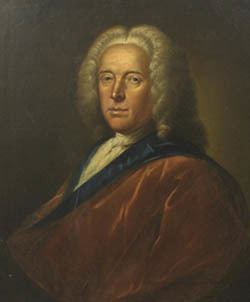 | ||
The Witchcraft Act (9 Geo. II c. 5) was a law passed by the Parliament of the Kingdom of Great Britain in 1735 which made it a crime for a person to claim that any human being had magical powers or was guilty of practising witchcraft. The maximum penalty set out by the Act was a year's imprisonment.
It thus marks the end point of the period Witch trials in the Early Modern period for Great Britain and the beginning of the "modern legal history of witchcraft", repealing the Witchcraft Acts which were based on a widespread belief in the genuine existence of magic and witchcraft.
The law was reverting to the view of the medieval Church that witchcraft and magic were illusory, treating as an offence not the supposed practice of witchcraft but the superstitious belief in its existence. The Act reflected the general trend in Europe, where after a peak in the mid-17th century, and a series of late outbursts in the late 17th century, witch-trials quickly subsided after 1700. The last person executed for witchcraft in Great Britain was Janet Horne in 1727.
Initially presented to the House of Commons on 27 January 1735/6 by John Conduitt, John Crosse and Alderman George Heathcote, the Act received Royal Assent on 24 March and came into effect on 24 June. In the words of Davies (1999), the new law meant that witchcraft was "no longer to be considered a criminal act, but rather an offence against the country's newly enlightened state". Up until 1772, it was illegal for the newspapers to report on parliamentary debates, meaning that there is a lack of archival material on the parliamentary debate on the implementation of the Act. According to Davies (1999), it appears that the Act "generated only a modicum of debate" within parliament, with several amendments being suggested in both the House of Commons and the House of Lords. The only figure to offer significant opposition to the Act was Lord James Erskine (1679–1754). Erskine not only fervently believed in the existence of witchcraft, but, it has been argued, also held beliefs that were deeply rooted in "Scottish political and religious considerations" and which caused him to reject the Act. His objection to the Act "marked him out as an eccentric verging on the insane" among Members of Parliament, and in turn his political opponents would use it against him; one of his staunchest critics, Robert Walpole, who was then the de facto Prime Minister of the country, allegedly stating that he no longer considered Erskine to be a serious political threat as a result of his embarrassing opposition to the Act.
The Witchcraft Act of 1735 was frequently invoked in the early years of the 19th century in an attempt by the political elite to root out "ignorance, superstition, criminality and insurrection" among the general populace, and even more so under a new statute brought in to reinforce the 1735 act in 1824.
In September 1944, Helen Duncan was jailed under the Witchcraft Act on the grounds that she had claimed to summon spirits. It is often contended, by her followers that her imprisonment was in fact at the behest of superstitious military intelligence officers who feared she would reveal the secret plans for D-Day. She came to the attention of the authorities after supposedly contacting the spirit of a sailor of the HMS Barham, whose sinking was hidden from the general public at the time. After being caught faking a spiritual manifestation, she was arrested during a seance and indicted with seven punishable counts: two of conspiracy to contravene the Witchcraft Act, two of obtaining money by false pretences, and three of public mischief (a common law offence). She spent nine months in prison. Duncan has been frequently described as the last person to be convicted under the Act.
The last person convicted under the Act was Jane Rebecca Yorke of Forest Gate in east London. On 26 September 1944 at the Central Criminal Court, Yorke was convicted on seven counts of "pretending...to cause the spirits of deceased persons to be present" and bound over.
The last threatened use of the Act against a medium was in 1950.
In 1951 the Witchcraft Act was repealed with the enactment of the Fraudulent Mediums Act 1951, largely at the instigation of Spiritualists through the agency of Thomas Brooks MP.
It is widely suggested that astrology may have been covered by the Witchcraft Act. From the 1930s onwards many tabloid newspapers and magazines carried astrology columns, but none were ever prosecuted.
The Witchcraft Act remained legally in force in Northern Ireland, although it was never actually applied.
The Witchcraft Act is still in force in Israel, having been introduced into the legal system of the British Mandate over Palestine; Israel gained its independence before the law was repealed in Britain in 1951. Article 417 of the Israeli Penal code of 1977, incorporating much legislation inherited from British and Ottoman times, sets two years' imprisonment as the punishment for "witchcraft, fortune telling, or magic for pay". The law in Israel applies only to practitioners of witchcraft who charge a fee.
The South African Witchcraft Suppression Act, 1957, which is still in force, was based on similar 19th-century laws in the Cape Colony which were themselves based on the Witchcraft Act 1735.
